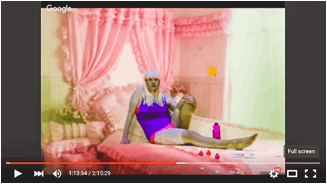Fake It ’Til You Make It and Other Mantras to Completing a Practice-led/-based/with PhD
Laura O’Connor
This paper opens with some daunting encounters experienced during my PhD, as I had to defend what it was I was doing and figure out what exactly I was supposed to do. Notions of “practice-based”, “as”, “with”, or “led” research were always discussed; however, truly knowing how to use these methods and apply them to a form of studio practice and academic study was challenging. Here, I explain my journey and methodology as I worked through my research questions within my art practice and theoretical enquiry.
Early Encounters
The title of this paper, “Fake It ’Til You Make It”, comes from advice a friend gave to me as I cried on her sofa three months into my PhD. These tears were spurred on by my lack of confidence, feeling lost, and the fact that a friend’s dad had grilled me on the validity of my research, wondering why the Department of Employment and Learning (DEL) would fund me for such research, and if I thought I would get a job out of it afterwards.
In my first year, I attended a research training workshop in the university, where the instructor stated sarcastically that: “The art students will probably just do a performance and get their viva”. He was right, I did do a performance for my viva,and passed, however this is not the only reason I passed; producing the written thesis was central to my success.
Defining the terms to describe the research I was pursuing caused some debate. I was corrected by a head of department for calling my PhD “practice-based”; rather, I was told, it was “with practice”. [1] When I checked the university handbook, the PhD “with practice” was described as “practice-based research”, stating that the university uses the PaR or Practice-as-Research model by Robin Nelson and Stuart Andrews in their short 2005 report The Regulations and Protocols Governing “Practice as Research” (PaR) in the Performing Arts in the UK Leading to the Award of PhD, according to which practice is regarded as a “methodological process of research inquiry and a mode of dissemination of research in its own right”. This also means that there must be a substantial written component to accompany the practice. “Normally, a written submission of 40,000 words will constitute 50% of the project and there will be a minimum of 20,000 words or 25% of the project”. [2] I ended up with around 80,000 words and a substantial amount of studio practice.
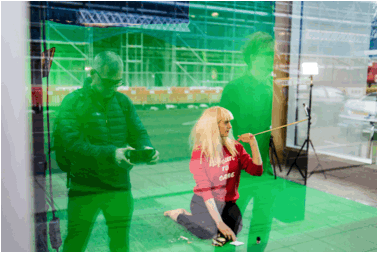
Figure 1: Image of Laura O’Connor’s viva performance (with reflections of Head of Ulster University Doctoral College Dr Justin Magee and External Examiner Professsor David Campbell). Photo: Jon Beer.
When I was doing my research there were a number of students who had started off as practice-based and moved to fully written academic thesis as the combination of practice and theoretical writing was too challenging or the writing overshadowed the practice.
About My Research
I received an honours degree from Limerick School of Art and Design in Sculpture and Combined Media in 2008, and from there I moved to Belfast to pursue a Master of Fine Arts (MFA). One of the main reasons for doing the MFA was the opportunity to teach at higher-level institutes. I was driven by a passion for sharing knowledge and the group criticism environment. However, opportunities for teaching or access to teaching courses were not made available to me. I had never considered doing a PhD as I felt that such a high level of academic study was beyond my capabilities; my MFA was completely practice-based, and I had not written academically since my undergraduate thesis. There were a number of factors that led me to pursuing the PhD when I did: the proposed topic was appropriate to my practice; I would be working with two highly regarded supervisors; I would be funded to work for three years in a field that I loved; and at the end of it I would be closer to getting a job in academia.
My practice, previous to applying, was performance-to-camera based. I had created many pieces that were well received, in particular, the 2010 work Dull, Limp, Lifeless,a five-minute video projection that features me, wearing a blonde wig and staring down the lens of a camera, as a fan blows my hair in an attempt to achieve the “windswept look” (Figure 2). In this video, I am unable to stop the air from the fan making my eyes water and subsequently look as though I am crying. The work explores the line between representation and reality in the media’s portrayal of the female body. My durational works like Dull, Limp, Lifeless use irony as a strategy to subvert everyday images of women in the media and advertising.
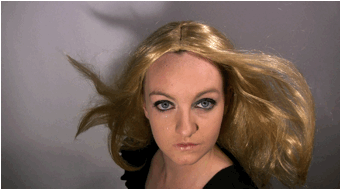

Figure 2: Dull, Limp, Lifeless,Laura O’Connor,2010. Single-channel video projection. Screen grab. Figure 3: QR code link for Dull, Limp, Lifeless.
The route I took for my PhD research was an investigation into forms of self-representation on social media and into artists that were attempting to subvert the repetition of gendered norms. In addition, my study aimed at defining whether stereotypically gendered norms, seen in Hollywood cinema and advertising, have prevailed since the shift to new forms of self-representation.
The title of my PhD thesis is Warped Mirrors: Contemporary Representation of Women on Screen. Within this investigation, my main area of focus was social media and digital everyday technology such as iPhones and tablets. The initial questions of my investigation were: what methods do women artists use when attempting to subvert contemporary stereotypes of femininity seen in the self-produced images of young women online? What are the implications of using the Internet as a site within these subversive art practices? And, what methods could be employed (in art practice) to more successfully subvert the screen as a site of everyday digital performance? Within these questions were many sub-questions to be answered, such as: who are the young women I am looking at? What stereotypes of femininity do they represent? What is a subversive act? When I talk about the Internet, where exactly on the Internet are these performances taking place?
I started with laying a historical groundwork to the research by introducing early examples of feminist art practices that dealt with new media technology. The first chapter discusses the work of American artist and filmmaker Lynn Hershman Leeson and Australian artist collective VNS Matrix. In detail, I analysed Hershman Leeson’s 1980s CD-Rom installations Lorna (1984) and Deep Contact (1989)as well as the 1990s computer and online works by VNS Matrix. These works were framed by cyberfeminist theories from Donna Haraway, and Rosi Braidotti’s theories on the posthuman and the nomadic subject. My investigation opened up a dialogue that would thread through the thesis, in particular around ideas of networked identities, subversion, forms of representation within these early platforms of networked communication, and modes of spectatorship.
As my research was dealing with new forms of representation, I needed to find a way of researching that would inform my studio practice while allowing for a discussion of the everyday activities of young women on social media. However, it was not my aim to do field research on the everyday activities of young women online, as I am not a sociologist and do not have the skills to conduct such research. I drew on the sociological research already done by social media researchers such as Jessica Ringrose, Emma Renold, Amy Shields Dobson, and Danah Boyd. This scholarship enabled me to build a picture of the types of gendered performances to be found on social media.
My art practice has always centred on how images of “beauty” affect me and how I react to these images by trying to alter my body. In many ways, I have used art as a tool to expose these beauty practices and as a strategy to unravel the absurdities of trying to attain unachievable and unrealistic standards. My research focused on the practices of a stereotype of heteronormative White-Western femininity and one that I aligned with postfeminist theories. I employed Rosalind Gill’s 2007 analysis of postfeminist culture described as a “sensibility”. She discusses how mediums of representation such as Web 2.0 complicate existing literature in feminist media studies through the rise of self-representation and the blurred distinctions between producers and consumers. The main attributes of this postfeminist sensibility, Gill states, are: the notion that femininity is increasingly figured as a bodily property; a shift from objectification to subjectification in the ways that (some) women are represented; an emphasis upon self-surveillance, monitoring and discipline; the dominance of a “makeover paradigm”; a resurgence of ideas of natural sexual difference; the marked “re‐sexualisation” of women’s bodies; and an emphasis upon consumerism and the commodification of difference (149).
I looked at contemporary everyday digital forms of online representation that fitted with Gill’s postfeminist sensibility. Here, I was interested in how agency is performed and whether it is possible to attain agency on these networks when the performance of an “acceptable” type of femininity was encouraged. This is seen in how sites such as Instagram have censored certain types of female performances deemed “inappropriate”. The images show menstrual blood, pubic hair and fat. I used these images to show how regulators behave as a third party in the visibility of “appropriate” bodies on social media. [3] This research into everyday performances on social media created a foundation for examining the practices of artists on social media that challenge the third-party moderation of women’s bodies online and how postfeminist sensibilities are performed within the frame of individuality, choice, empowerment and agency.
To exhibit the different types of performances, I placed the work of artists Amalia Ulman alongside the everyday performance and public breakdown of Instagram influencer Essena O’Neill. Ulman’s project, which exposes how acceptable the performance of postfeminist tropes are on social media, was heralded as an “Instagram masterpiece” (Sooke), where Essena O’Neill’s honest confession of how contrived and commercially driven her Instagram posts were came under attack by the community of social media influencers and caused her total removal from social media.
I went on to look at how artists perform tropes of the teen girl, both online and in the gallery. In particular, I have studied the works of artists such as Ann Hirsch and Louise Orwin, who perform alter egos on social networks and then re-perform or re-present the works in a gallery or theatre space. I explored various debates around the validity of feminist art intervention online, particularly when it is closely linked to mainstream pornography. Erotic photographer and blogger Natacha Merritt’s work from the early 2000s was examined due to its controversial reception. The agency of Merritt’s work was debated as to whether it could be labelled as art, due to her compliance with a mainstream pornographic aesthetic. This debate provided a framework for me to analyse the contemporary practice of Leah Schrager, a so-called fourth-wave feminist artist, who performs as a naked therapist providing treatment for men over Skype and Instagram.
Practice
While experimenting with the use of social media as a space for performance, I became interested in how this could be translated to the gallery as something that is not just “after the fact”. From my research, I learned that by using these social networks the context of spectatorship is uncontrollable, which I felt was an important part of experiencing the work. I developed a number of works that explored how spectators could be implicated in the experience of looking that expanded on the act of “everyday looking”.
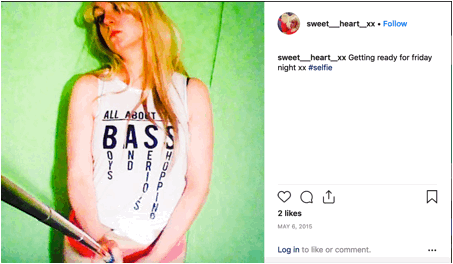
Figure 4: SweetHeart post on Instagram, Laura O’Connor, 2015.
Image: Screenshot courtesy of artist.
In these works, I was performing with the online alter ego of “SweetHeart”, a character that embodied the postfeminist subject, wearing clothing purchased in high-street shops that displayed what Amy Shields Dobson describes as “heterosexy”, where a young woman is “often framed for viewers by mottos of self-descriptive texts proclaiming confidence, and dismissing the potential criticisms or judgements of viewers on the basis of autonomy and self-acceptance” (98).
In earlier works posted to Instagram and other social networks I experimented with how to engage with spectators through online performance. I created selfie videos and stop/start videos where spectators would have to continuously tap their screens to see me move. I also performed in public changing rooms or toilets.
The two main works I developed were a series of selfie videos performed on the live streaming app Periscope and a number of other live streams performed in front of a green screen with YouTube.
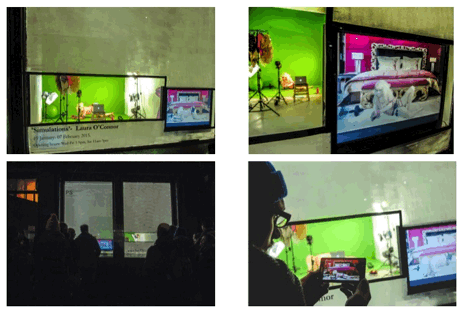
Figure 5: Simulations, Interfaces & Performativity, Laura O’Connor, solo exhibition,
PSSquared Gallery Belfast, 2015. Photos: Emma Campbell.
I had two solo exhibitions over the course of my PhD, the first in PSSquared Gallery, where I first developed the live green screen works. As the gallery was a shop front, I was able to have a screen for viewers to watch both performances at once. The spaces I put myself in were typical “girlie” spaces inspired by Pinterest folders and bedroom tours by YouTube vloggers. I created specialised equipment that enabled me to do workouts and apply make-up at the same time. The performance for this show lasted thirty minutes and entailed an uncomfortable scenario where SweetHeart attempted to both apply make-up, do workouts and keep one eye on the screen that was broadcasting the performance.
In May 2016 I had a solo show at Queen Street Studios Gallery, where I developed and expanded on the live performances from the PSSquared exhibition to a series of two-hour performances.
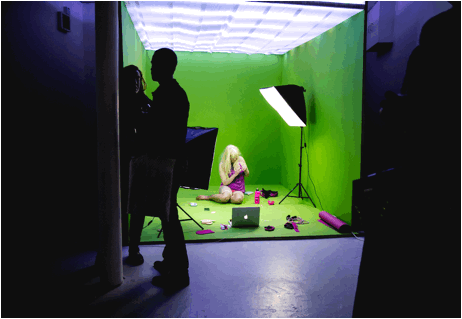
Figures 6 and 7: On the Internet Everybody Knows You’re a Girl. Laura O’Connor,
opening night two-hour performance, Queen Street Studios Gallery, Belfast, 2016. Photo: Jon Beer.
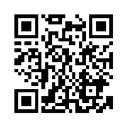
Figure 8: On the Internet Everybody Knows You’re a Girl. Laura O’Connor, opening night two-hour performance, Queen Street Studios Gallery, Belfast, 2016. Screenshot from YouTube stream courtesy of the artist. Figure 9: QR Code video link for Fragmented performance at Queen Street Studios Gallery, Laura O’Connor, 2016.
This show also displayed the videos I had created with Periscope, in particular, scenes where I had received abuse from viewers. These videos were placed on selfie sticks attached to plaster cast arms. The positioning of these works in the gallery required spectators to bend over or get closer in order to achieve a proper view of the works. In this way, the body of the spectator becomes active in the viewing process. Similarly, the positioning of the spectator in-between the “real” performance and the mediated online performance creates tension and causes uncomfortable viewing.


Figure 10: Dream Girl, Laura O’Connor, video, 9.04 minutes, 2016.
Figure 11: QR Code link to Dream Girl video.
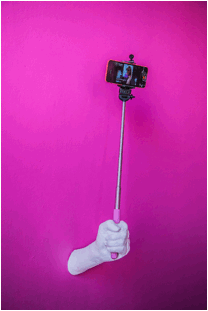
Figure 12: Selfie stick sculpture, Laura O’Connor, 2016. Plaster-cast hand, selfie stick and iPhone.
From the exhibition On the Internet Everybody Knows You’re A Girl,
Queen Street Studios Gallery, Belfast, 2016.
Interactivity in the Thesis
There were two main elements to my PhD, one was a written component, the other was my creative practice. As I said from the beginning: I did perform at my viva, however, the work had already been done, and the thesis had already been read and marked. The performance was, for me, a natural segue into the viva discussion. I felt that performing for the examiners, pre-viva, I would be able to more clearly discuss the ties between theory and practice. However, I was faced with the problem of how to achieve this for the reader of the thesis. I put QR codes in the thesis. I put instructions at the start of the chapter for how to download an app that would scan the codes. I put all the videos online and linked to the codes. As with the gallery works, my aim is always to try and consider the spectator and, in the instance of my thesis, it was no different. I wanted the examiner to experience the work (even though it was not during the live performance) by holding the videos on a personal device, which could expand how the reader imagined the work.
Conclusions
Throughout the process of my PhD I was faced with doubts about how to do practice-based or practice-led research. I frequently encountered arguments as to what I was actually studying or the validity of an arts practice PhD. The mixed messages I received within the university such as producing an arts practice as part of my research but not being provided with studio space contributed to the feeling of imposter syndrome. Navigating how to conduct practice-based research was a learning curve in itself. An art practice is a very personal thing, and to turn it into to an academic study is daunting. For me it was about contextualising the practice and questioning why and how the work was expanding these contexts and evolving with the rapid advances in communication technology. As each art practice is different, and each research method will be different, ultimately one must produce “the big red book”; however, this doesn’t mean the theoretical enquiry takes precedence over the practice. It is about finding balance and ignoring the doubts that come with what is still a recent form of PhD study.
Notes
[1] This argument was based on the fact that I wanted to know why the university offered a practice-based PhD no studio spaces for students to practice.
[2] “There is wide divergence of practice in this aspect. Some institutions who appear not to accept PaR as research-worthy require a full (typically 80.000 word) traditionally written submission, grudgingly accepting any practical submission as supplementary evidence of the ideas and arguments put forward in the thesis. In one instance a PaR candidate appears to have been required to write an additional 20,000 words for having the temerity to submit a practical outcome. The tendency is to [p]lace more weight upon the traditionally written ‘thesis’ than on practical outcomes though there is evidence that the situation is changing quite rapidly. Other than in Visual Arts, there is no evidence of 100% practical submission. The current norm of a 50/50% balance is thus used here” (Nelson and Andrews).
[3] I draw on Bernie Hogan’s theories of the third party, in her case Facebook’s servers, that contribute to the presentation of the self on social media (379–380).
References
1. Boyd, Danah. It’s Complicated: The Social Lives of Networked Teens. Yale UP, 2014.
2. Braidotti, Rosi. “Posthuman, All Too Human: Towards a New Process Ontology." Theory, culture & society, vol. 23, no. 7–8, 2006, pp. 197–208, DOI: https://doi.org/10.1177/0263276406069232.
3. ---. Nomadic Theory: The Portable Rosi Braidotti. Columbia UP, 2011.
4. Dobson, Amy Shields. Bitches, Bunnies, and BFFs (Best Friends Forever): A Feminist Analysis of Young Women’s Performance of Contemporary Popular Femininities on MySpace,2010. PhD dissertation, Monash University, 2017. monash.figshare.com/articles/Bitches_bunnies_and_BFFs_best_friends_forever_a_feminist_analysis_of_young_women_s_
performance_of_contemporary_popular_femininities_on_MySpace/4546282.5. Gill, Rosalind. “Postfeminist Media Culture: Elements of a Sensibility.” European Journal of Cultural Studies, vol. 10, no. 2, 2007, pp. 147–166, DOI: https://doi.org/10.1177/1367549407075898.
6. Haraway, Donna. (1994). A Manifesto for Cyborgs: Science, Technology, and Socialist Feminism in the 1980s.” The Postmodern Turn: New Perspectives on Social Theory, edited by Steven Seidman. Cambridge UP, 1994, pp. 82–115, DOI: https://doi.org/10.1017/CBO9780511570940.007.
7. Hershman Leeson, Lynn. Lorna. Installation, 1983.
8. ---. Deep Contact. Installation, 1989.
9. Hirsch, Ann, Scandalishious Project, 2008–2009.
10. Hogan, Bernie. “The Presentation of Self in the Age of Social Media: Distinguishing Performances and Exhibitions Online.” Bulletin of Science Technology & Society, vol. 30, no. 6, 2010, pp. 377–386, DOI: https://doi.org/10.1177/0270467610385893.
11. Merritt, Natacha, Digital Diaries, 2001.
Nelson, Robin, and Stuart Andrews. “A Short Report by Robin Nelson (MMU) and Stuart Andrews (PALATINE) on the Regulations and Protocols governing ‘Practice as Research’ (PaR) in the Performing Arts in the UK Leading to the Award of PhD.” 2005, www.bris.ac.uk/parip/par_phd.htm. Accessed 11 Apr. 2019.12. Orwin, Louise, Pretty Ugly, 2013–2014.
Renold, Emma, and Jessica Ringrose. “‘Schizoid Subjectivities? Re-theorising Teen-girls’ Sexual Cultures in an Era of ‘Sexualisation’.” Journal of Sociology, vol. 47, no. 4, 2011, pp. 389–409, DOI: https://doi.org/10.1177/1440783311420792.13. Retallack, Helen, et al. ““Fuck Your Body Image”: Teen Girls’ Twitter and Instagram Feminism in and Around School”. Learning Bodies. The Body in Youth and Childhood Studies, edited by Julia Coffey et al., Springer, 2016, pp. 85–103, DOI: https://doi.org/10.1007/978-981-10-0306-6_6.
14. Sooke, Alaistair. “Is this the first Instagram masterpiece?” The Telegraph, 18 Jan. 2016. www.telegraph.co.uk/photography/what-to-see/is-this-the-first-instagram-masterpiece.
15. Ulman, Amalia. Excellences & Perfections. Instagram performance, 2014.
Suggested Citation
O’Connor, Laura. “Fake It ’Til You Make It and Other Mantras to Completing a Practice-led/-based/with PhD.” Alphaville: Journal of Film and Screen Media, Crossing the Boundary: The Theory & Practice Dossier,no. 17, 2019, pp. 197–208. https://doi.org/10.33178/alpha.17.14.
Laura O’Connor has recently completed a DEL-funded PhD with practice from Ulster University. O’Connor’s research focused on the practices of female artists on social media who respond to and challenge representations of femininity aligned with postfeminist sensibilities. Through her performance and video practice, and research of the field, O’Connor developed a practice that dealt with modes of spectatorship and fragmented identity on social media and in gallery-based work.






